You might be surprised to learn—I sure was—that it’s only been a couple of years since the last new Prince of Persia game. In 2022, Ubisoft subsidiary Ketchapp released Prince of Persia: Escape 2 for mobiles … a soulless, opportunistic cash-grab (and sequel to the equally cynical Prince of Persia: Escape from 2018). But you have to go back much further for the last half-decent game (2010’s Forgotten Sands), and further still for the last good one (the 2008 reboot). Which makes Prince of Persia: The Lost Crown all the more welcome: a breath of fresh air, and a reminder that if you give a beloved license to a team who actually cares—rather than one that cares only about revenue streams—the result can be something magnificent.
It’d be reductive to describe The Lost Crown as an eclectic mash up of different inspirations, but I’m going to that anyway. Cues from the original Prince of Persia and the Sands of Time trilogy, more modern exploration platformers (less Metroid, more Ori and the Blind Forest), Ubisoft Montpellier’s background with Rayman, shōnen anime, and real-world history are all woven into the fabric of this new Prince of Persia.
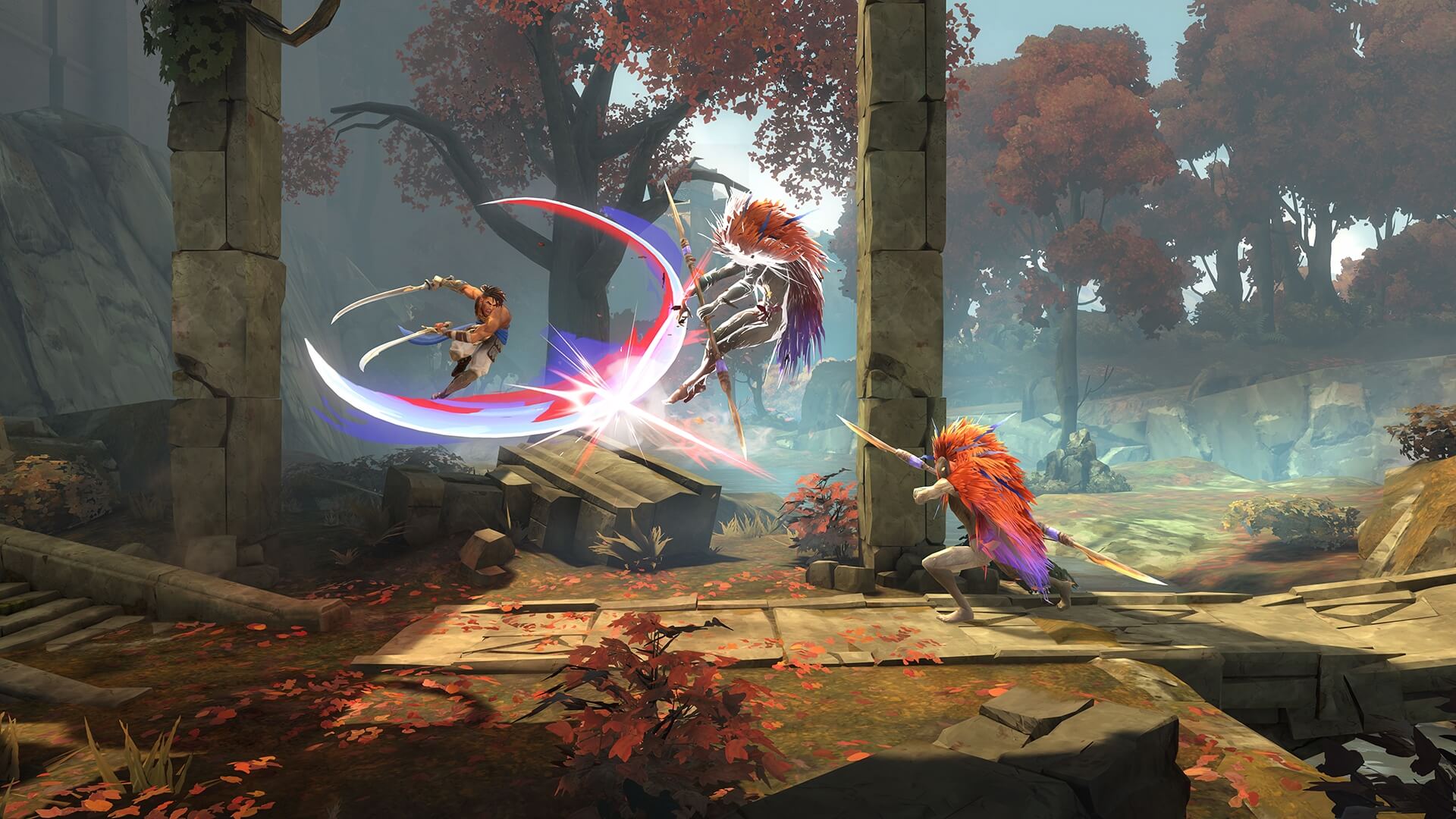
The influence taken from its older siblings is expected—this is, undeniably, a Prince of Persia game. The ominous atmosphere and maze-like level design call to mind the groundbreaking original game, to a degree that few games since have been able to. The Sands of Time trilogy is laced through this game’s fiendish mechanical traps, and an acrobatic style of combat that puts a lot of emphasis on mobility, well-timed dodges and counters, and varied combo routes. There’s even a sense of the 2008 reboot, if indirect, in the vision of The Lost Crown‘s world and its willingness to carve its own path.
Hence those other sources of inspiration. The masterful level design and fluid movement of Rayman Origins and Legends runs all through The Lost Crown’s approach to level design and performing puzzles. The cues on map design and upgrade progression taken “metroidvania”-style games create a canvas for exploration and discovery, with a particular focus on how upgrades unlock new methods of traversal.
Where earlier games’ connection to Persian history and culture was superficial at best, The Lost Crown more directly draws on the stories surrounding famed historical figures—the Immortals, Darius the Great, and Thomyris, among others—and Persian myth. It’s still very much a work of fiction, focused on entertainment over historical accuracy, but with closer ties to Persia’s real-world legacy than any Prince of Persia before it. (It’s also the first Prince of Persia to include Persian voice acting, which is very well worth checking out.)
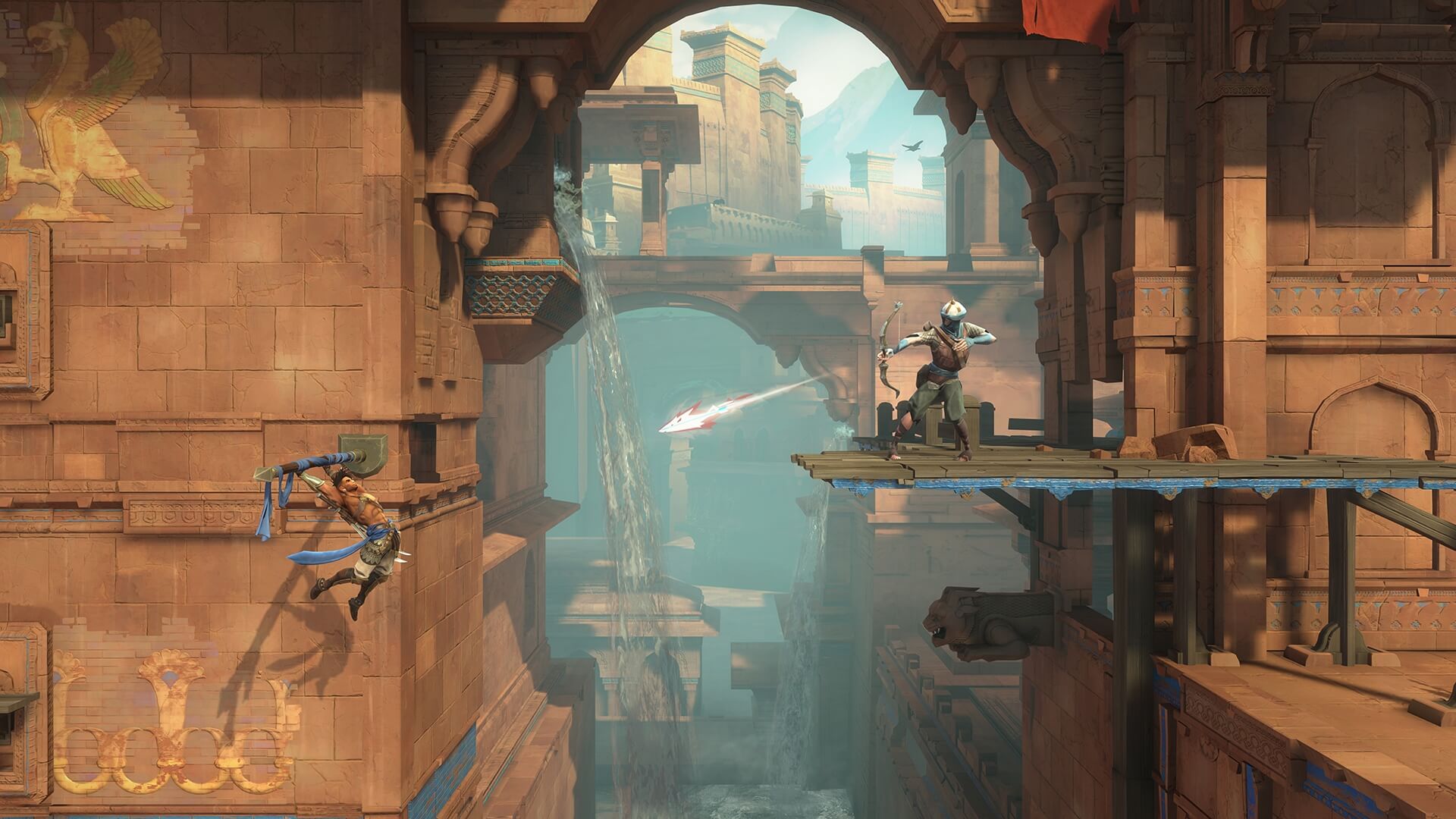
That legacy comes to life in vibrant fashion with a cinematic style heavily influenced by anime classics. You’ll find shades of everything from Berserk to Demon Hunter in the character designs, animations, narrative arcs, and the thematic foundation of a would-be hero figuring out that you can’t solve all of life’s problems by punching them. The result? A game with a unique sense of style and energy among the Prince of Persia pantheon, but that leaves no room for doubt as to whether it belongs there.
In the hands of a less capable or experienced team, such a combination could easily become disjointed. But here, the pieces fit together seamlessly, creating an assemblage that’s so much more than the sum of its parts. There’s a natural flow between fluid platforming and dynamic combat, with level and puzzle design that never misses a chance to make the most of that synergy. Upgrades are designed to versatile, with navigation and fighting capabilities equally benefiting from the steady stream of new tools. That, in turn, loops the metroidvania-style exploration back into combat, platforming, puzzles.
Part of why it works so well is that, as much as The Lost Crown wears its many inspirations on its sleeve, it doesn’t feel excessively beholden to any of them. It uses what works, and what fits with the development team’s vision, and leaves aside those things that don’t, even if that means veering away from series legacy. There’s no “sands of time”-esque power, for example, despite manipulation of time and space being the core theme for all of the game’s upgrades—you could probably make such a power work if you had to, but it’d be a little out of step. The Lost Crown is all the better for the way it holds true to its vision.
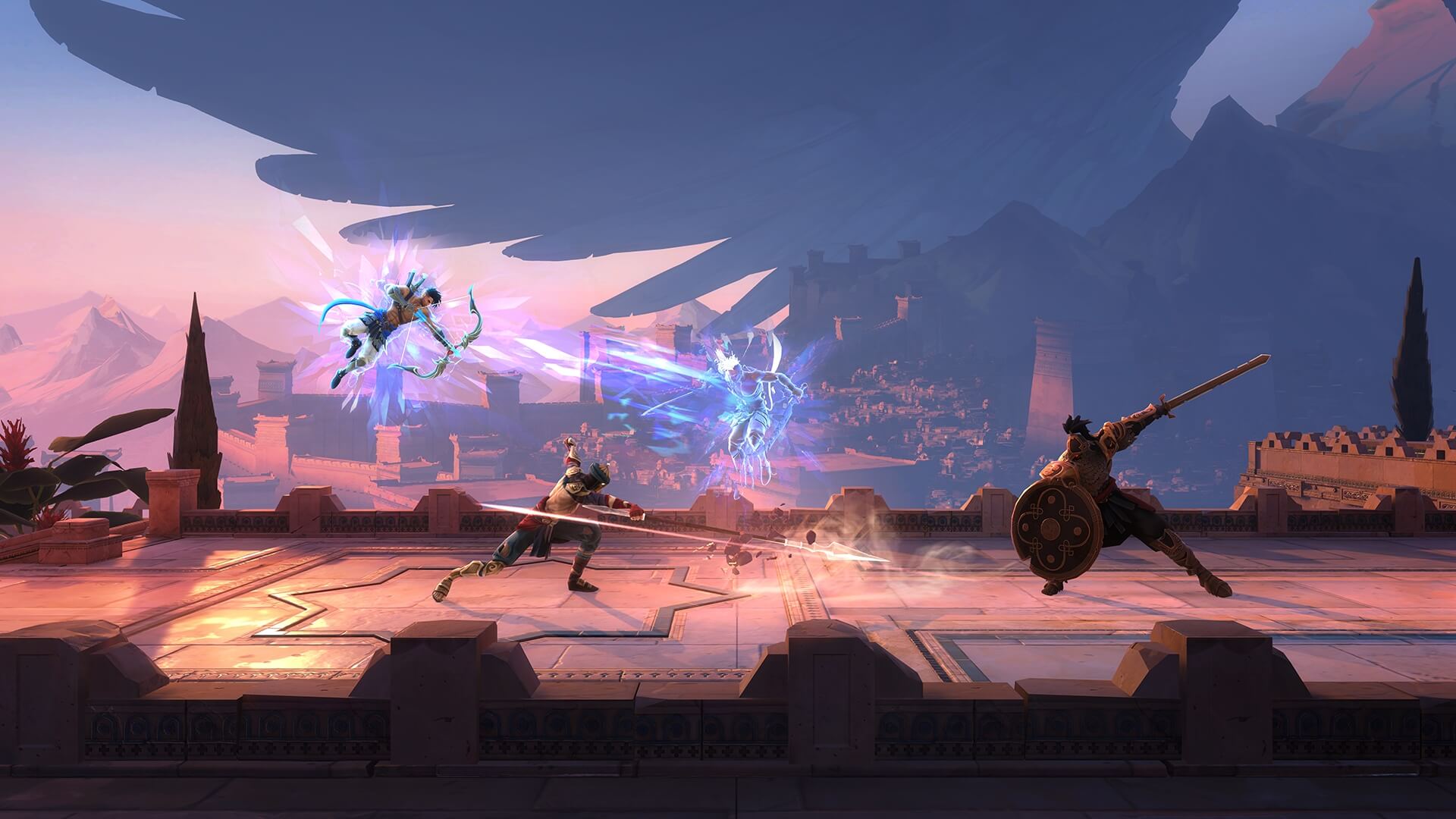
There are plenty of original ideas in the mix, too. Much has already been made of the “memory” system, one of the best innovations in a long, long time for the exploration platformer genre as a whole. Instead of convoluted map notes to record points of interest to come back to later, you can just take a screenshot and pin it to the map—all with the press of a single button. I expect every other metroidvania from now on to copy The Lost Crown‘s homework on this.
There’s a similar sense of originality in a lot of the game’s finer details. The Lost Crown boasts some of the more unique upgrades I’ve seen in a metroidvania for some time, like one which lets you set a shadow in place, frozen in time, and teleport back to it later. Any momentum is preserved when you create the shadow and resumed when you teleport, leading to some very creative puzzles with brilliant solutions. Encounter design for boss fights revels in the same sort of creativity, as does an assortment of side quests that put your investigative skills to the test.
The only place where The Lost Crown falls a little short is in a plot that never quite delivers on what it sets up. The first half of the game goes to great length to establish distortion of the flow of time and intersecting timelines as central conceits—”Time is an ocean in a storm”, and all that. With that comes a host of possibilities that are left largely untapped in favour of a narrative payoff that plays it a little too safe: stop the bad guy, save the kingdom, learn about the responsibility that comes with power. It’s not a bad story by any stretch, and with plenty of emotional weight that comes through strong vocal performances and impressive cinematic direction. It just lands a little flat, after a setup that teases something so much bigger and more surprising.
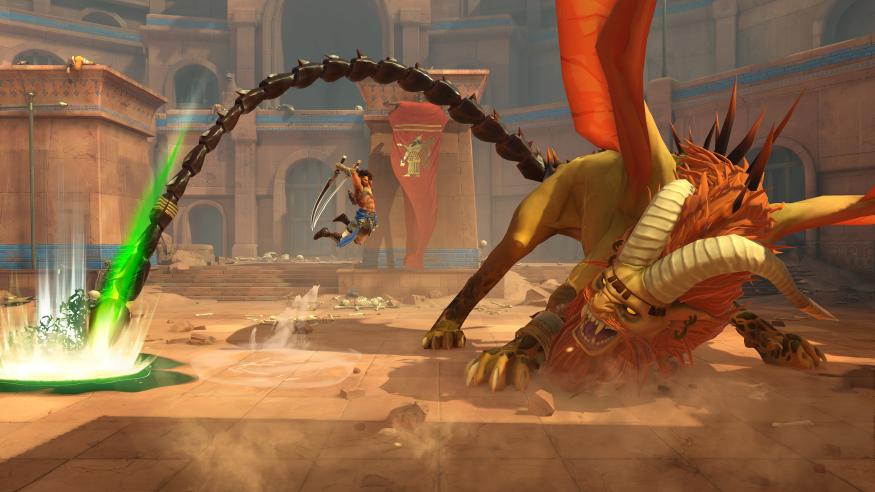
But when “the story is good but doesn’t quite stick the landing” is the worst thing you can say about a game, you know you’re onto something impressive. Prince of Persia: The Lost Crown is an incredible achievement, not just in masterful game design, but in holding true to a clear vision and breathing new life into a dormant franchise in the process. Let’s hope Ubisoft (and every other megacorp hoarding IP rights like Smaug hoards treasure) takes notice of The Lost Crown’s success, because this is what you get when you give a beloved license to a team that really, truly cares.
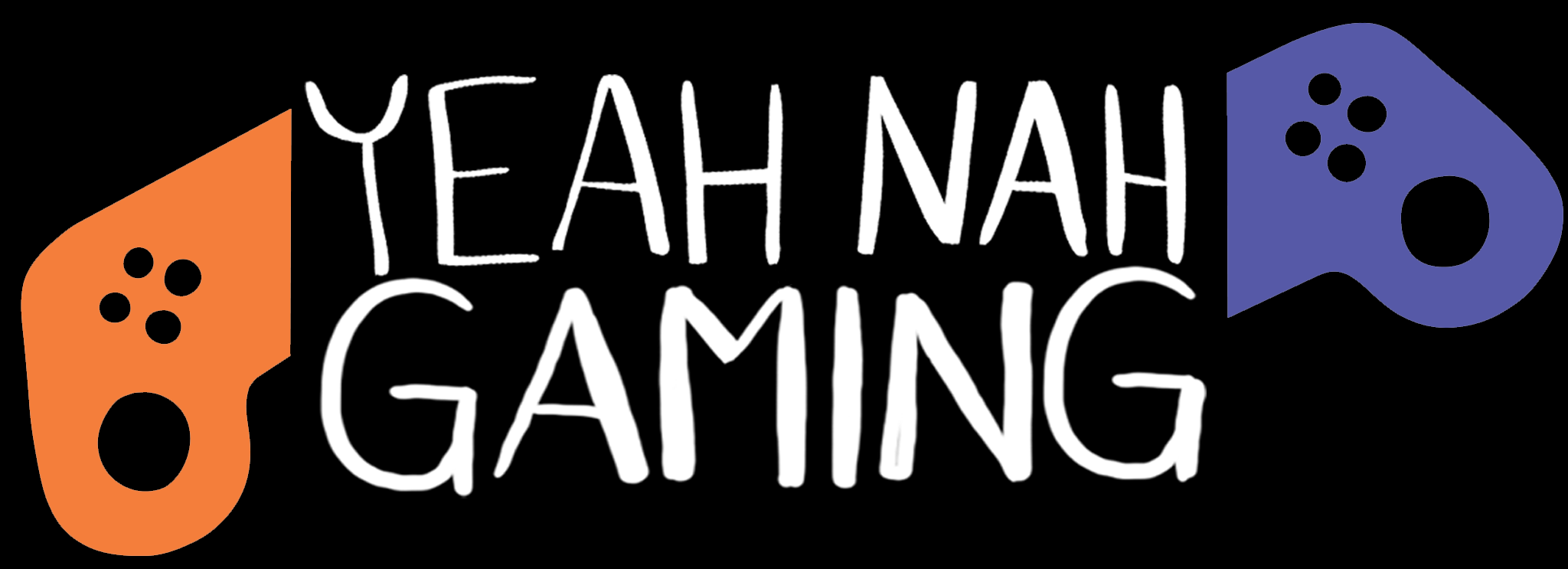
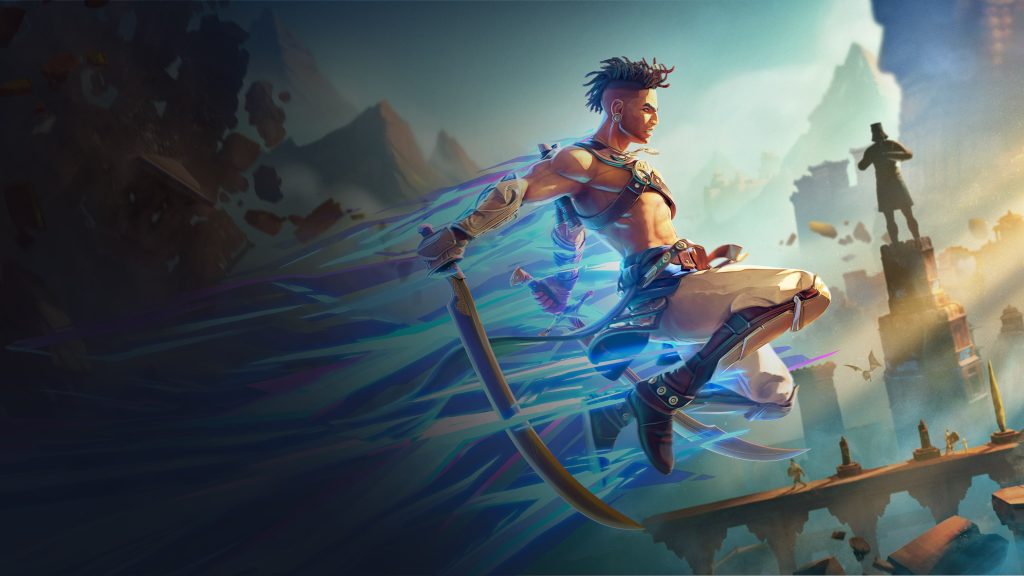
1 Comment
Pingback: PlayStation Plus March 2025 update: Prince of Persia, Armored Core, and more - Yeah Nah Gaming